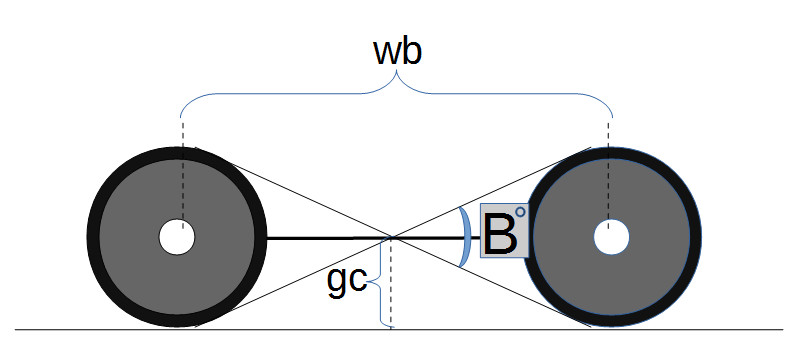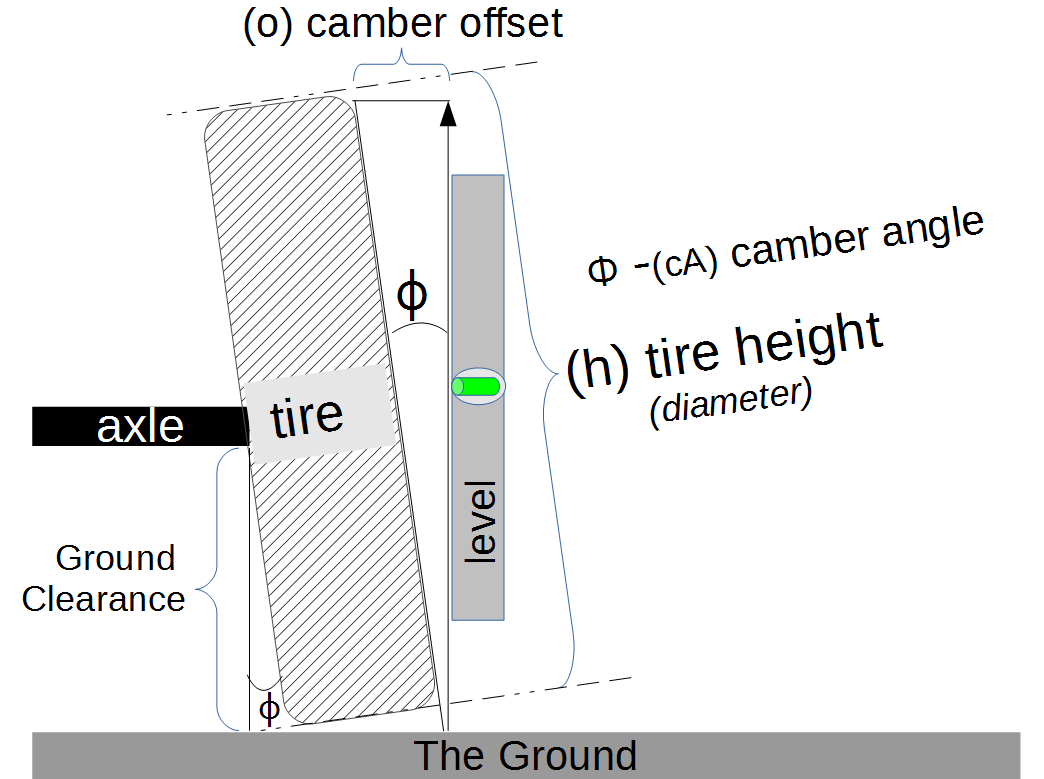The Approach Angle calculator computes the maximum angle (α) of a ramp onto which a vehicle can climb from a horizontal plane without interference (scraping) the ramp or incline.
INSTRUCTIONS: Choose units and enter the following:
- (h) Height of Undercarriage (see diagram)
- (L) Length from Tire contact point to the point below the tail (see diagram)
ANGLE (α): The calculator returns the approach or departure angle in degrees. However, this can be automatically converted to other angle units (e.g. radians) via the pull-down menu.
The Math / Science
You own an RV and want to take it up your driveway, but you DO NOT want to hear the crunch of bottoming out. The Approach Angle calculator computes the maximum angle your vehicle can approach based on two measurements, the height at the tail (H) and the length from the tire contact point and the point below the tail (L)
The formula for the Approach Angle is:
α = tan-1(H/L)
where:
- α = Max Approach Angle
- H = Height of Undercarriage
- L = Length of Base from Tire to Point below Tail
Approach angle (α) is the maximum angle of a ramp onto which a vehicle can climb from a horizontal plane without interference. It is defined as the angle between the ground and the line drawn between the front tire and the lowest-hanging part of the vehicle at the front overhang. Approach angle is also referred to as ramp angles.
Measuring
To calculate your approach angle, put your vehicle on a flat and level surface. Next, measure the height (H) and length (L). To measure the height (H) and length (L), mark the point directly below the end of the undercarriage at the tail of your vehicle. Measure the height from the undercarriage to that point, and the length from the center of the tire to that point. This only works if there is nothing (e.g., muffler tail pipe) that hangs down even lower. α° = Approach angle: ß° = Departure angle
Break-over Angle (β )
Camber Angle (Φ) 
Vehicle Calculators
- Approach (Departure) Angle: Computes the maximum angle of a ramp onto which a vehicle can climb without scraping.
- Degree to Percent Grade: Converts a grade to a degree angle.
- Camber angle - Wheel camber (tilt) calculation of angle
- Camber offset - Wheel camber (tilt) calculation of offset
- Breakover Angle: Compute maximum angle that a vehicle can drive over without the ground touching the vehicle's undercarriage.
- Time to Overtake: Computes the time for one object to overtake another.
- Distance to Overtake: Computes distance traveled to overtake another.
- Speed to Overtake: Computes the average velocity to overtake another.
- Distance at Speed: Computes the distance traveled over a period of time at a constant velocity (speed).
- Speed from Skid Marks: Estimates the speed of a vehicle based on length of skid marks.
- Braking Distance: Estimates distance to stop a vehicle based on initial velocity and braking coefficient.
- Total Stopping Distance: Computes the distance to stop a vehicle based on the initial velocity, reaction time and a braking coefficient.
- Speed from the Braking Distance: Estimates the initial speed based on the distance to stop a vehicle and the a braking coefficient.
- Used Car Price Comparison: Estimates the better value between two vehicles based on their mileage, cost and expected lifespan (miles).
- Belt Length: Computes the length of a belt that goes around two pulleys based on the pulley diameters and the distance between the axles.
- Belt Speed: Computes the speed at which a linear length of belt travels around a pulley based on the diameter of the pulley and the rotation rate.
- Pulley RPMs: Computes the RPMs of a pulley based on the belt speed and diameter of the pulley.
- 2nd Pulley RPMs: Computes the RPMs of a second pulley based on the the RPMs and Diameter of the first pulley and the diameter of the second pulley.
- 2nd Pulley Diameter: Computes the diameter of a second pulley based on the RPMs and diameter of the first pulley and the RPMs of the second pulley.
- RPM of 4th pulley on three shafts: Computes the RPMs (rotation rate) of a pulley when the RPM and Diameters are known for a series of pulleys on three axles.
- 2nd Gear RPM: Calculates the RPMs of a second gear when the RPMs and number of teeth are known for the first gear and the number of teeth of the second gear is known,
- 2nd Gear Torque: Calculates the torque of a second gear when the torque and number of teeth are known for the first gear and the number of teeth of the second gear is known,
References
Wikipedia - http://en.wikipedia.org/wiki/Approach_and_departure_angles
